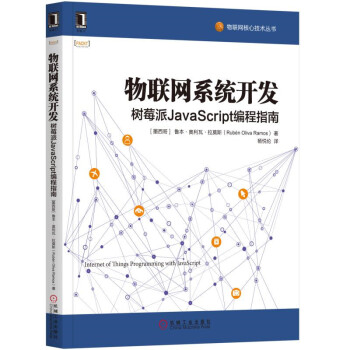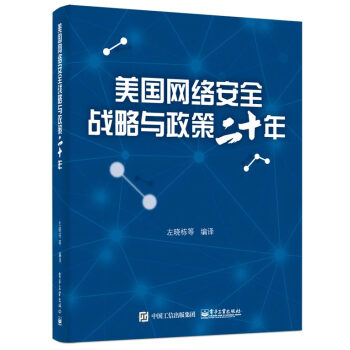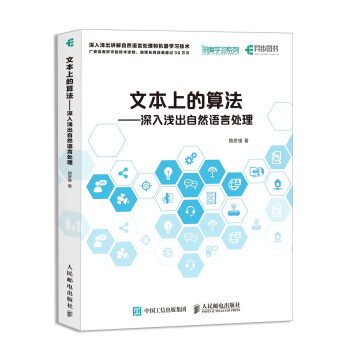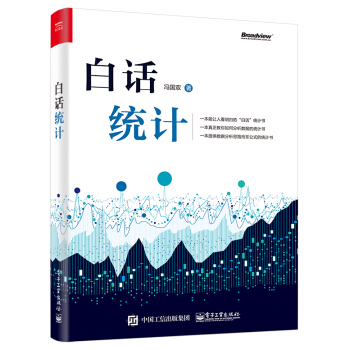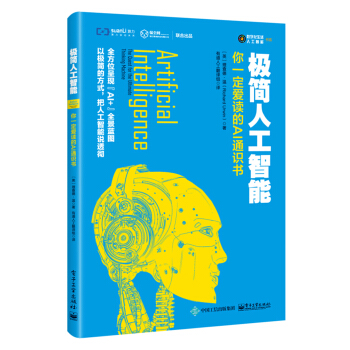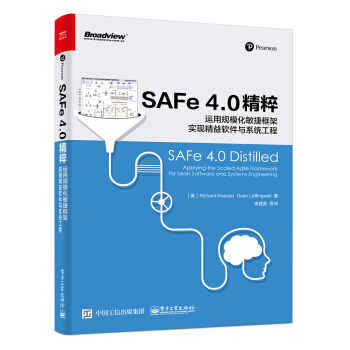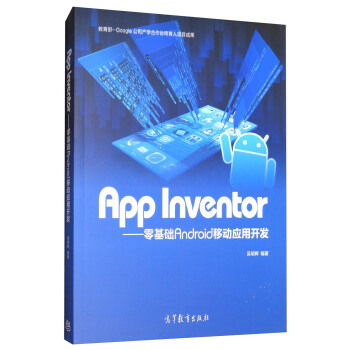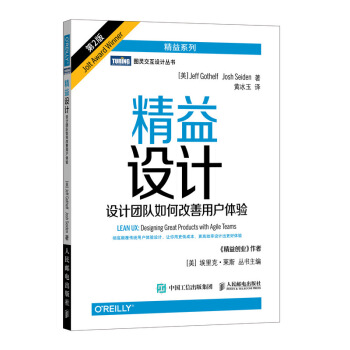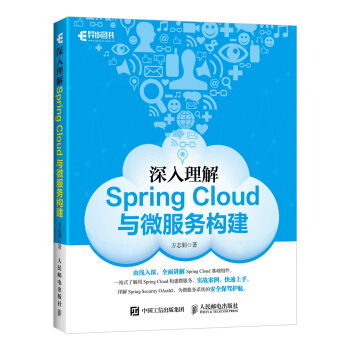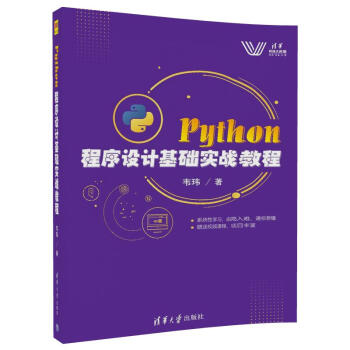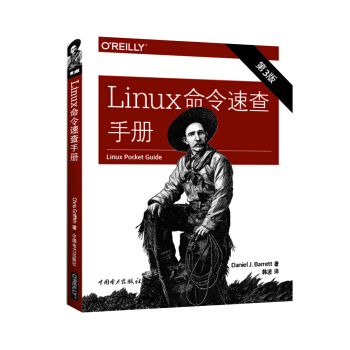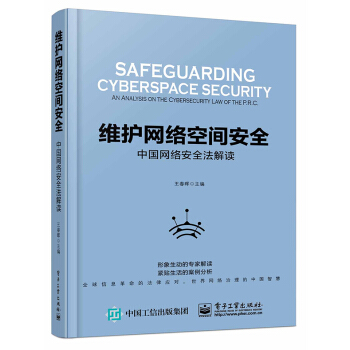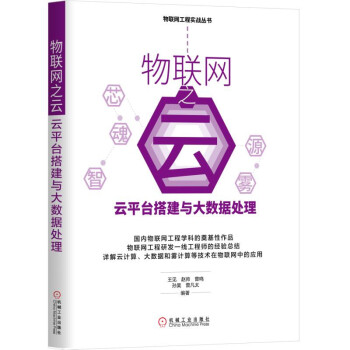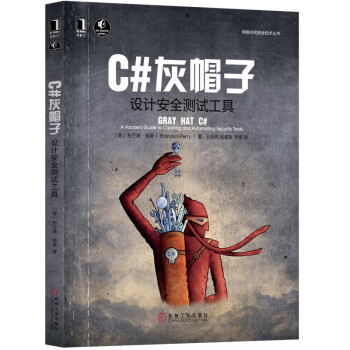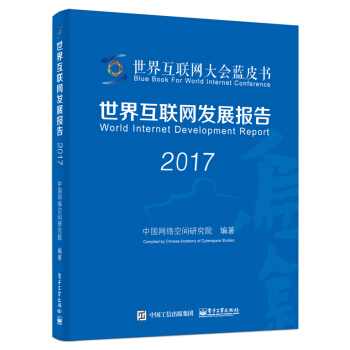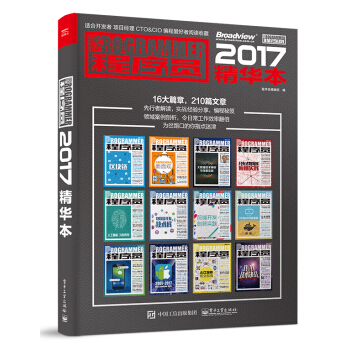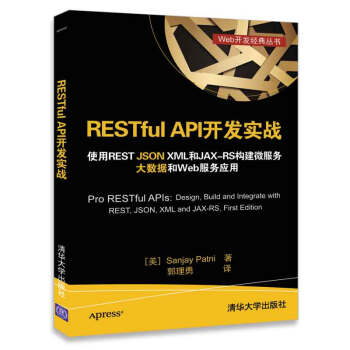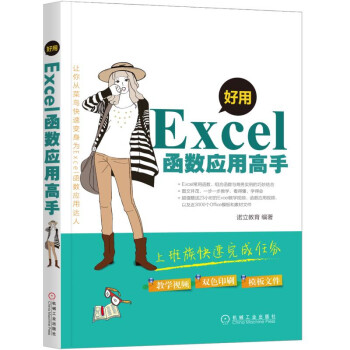![深度學習基礎(影印版) [ Fundamentals of Deep Learning]](https://pic.windowsfront.com/12310381/5aa5ecb1N6fe12616.jpg)

具體描述
內容簡介
Google、微軟和Facebook等公司正在積極發展內部的深度學習團隊。對於我們而言,深度學習仍然是一門非常復雜和難以掌握的課題。如果你熟悉Python,並且具有微積分背景,以及對於機器學習的基本理解,本書將幫助你開啓深度學習之旅。* 檢驗機器學習和神經網絡基礎
* 學習如何訓練前饋神經網絡
* 使用TensorFlow實現你的第1個神經網絡
* 管理隨著網絡加深帶來的各種問題
* 建立神經網絡用於分析復雜圖像
* 使用自動編碼器實現有效的維度縮減
* 深入瞭解從序列分析到語言檢驗
* 掌握強化學習基礎
作者簡介
Nikhil Buduma是Remedy的聯閤創始人和首席科學傢,該公司位於美國舊金山,旨在建立數據驅動為主的健康管理新係統。16歲時,他在聖何塞州立大學管理過一個藥物發現實驗室,為資源受限的社區研發新穎而低成本的篩查方法。到瞭19歲,他是國際生物學奧林匹剋競賽的兩枚金牌獲得者。隨後加入MIT,在那裏他專注於開發大規模數據係統以影響健康服務、精神健康和醫藥研究。在MIT,他聯閤創立瞭Lean On Me,一傢全國性的非營利組織,提供匿名短信熱綫在大學校園內實現有效的一對一支持,並運用數據來積極影響身心健康。如今,Nikhil通過他的風投基金Q Venture Partners投資硬科技和數據公司,還為Milwaukee Brewers籃球隊管理一支數據分析團隊。
本書內容貢獻者Nick Locascio是一位深度學習顧問、作傢和研究者。Nick在MIT的Regina Barzilay實驗室獲得瞭本科和工程碩士學位,專業從事NLP和計算機視覺研究。他曾工作於多個項目,從訓練神經網絡到編寫自然語言提示,甚至與MGH Radiology部門閤作將深度學習應用於乳腺X綫攝影的醫學輔助診斷。Nick的工作已被MIT News和CNBC報道。在其閑暇之餘,Nick為財富500強企業提供私人的深度學習谘詢服務。他還聯閤創立瞭標誌性的MIT課程6.S191 Intro to Deep Learning,教過300餘名學生,聽眾包括博士後和教授。
目錄
Preface1. The Neural Network
Building Intelligent Machines
The Limits of Traditional Computer Programs
The Mechanics of Machine Learning
The Neuron
Expressing Linear Perceptrons as Neurons
Feed-Forward Neural Networks
Linear Neurons and Their Limitations
Sigmoid, Tanh, and ReLU Neurons
Softmax Output Layers
Looking Forward
2. Training Feed-Forward Neural Networks
The Fast-Food Problem
Gradient Descent
The Delta Rule and Learning Rates
Gradient Descent with Sigmoidal Neurons
The Backpropagation Algorithm
Stochastic and Minibatch Gradient Descent
Test Sets, Validation Sets, and Overfitting
Preventing Overfitting in Deep Neural Networks
Summary
3. Implementing Neural Networks in TensorFIow
What Is TensorFlow?
How Does TensorFlow Compare to Alternatives?
Installing TensorFlow
Creating and Manipulating TensorFlow Variables
TensorFlow Operations
Placeholder Tensors
Sessions in TensorFlow
Navigating Variable Scopes and Sharing Variables
Managing Models over the CPU and GPU
Specifying the Logistic Regression Model in TensorFlow
Logging and Training the Logistic Regression Model
Leveraging TensorBoard to Visualize Computation Graphs and Learning
Building a Multilayer Model for MNIST in TensorFlow
Summary
4. Beyond Gradient Descent
The Challenges with Gradient Descent
Local Minima in the Error Surfaces of Deep Networks
Model Identifiability
How Pesky Are Spurious Local Minima in Deep Networks?
Flat Regions in the Error Surface
When the Gradient Points in the Wrong Direction
Momentum-Based Optimization
A Brief View of Second-Order Methods
Learning Rate Adaptation
AdaGrad——Accumulating Historical Gradients
RMSProp——Exponentially Weighted Moving Average of Gradients
Adam——Combining Momentum and RMSProp
The Philosophy Behind Optimizer Selection
Summary
5. Convolutional Neural Networks
Neurons in Human Vision
The Shortcomings of Feature Selection
Vanilla Deep Neural Networks Don't Scale
Filters and Feature Maps
Full Description of the Convolutional Layer
Max Pooling
Full Architectural Description of Convolution Networks
Closing the Loop on MNIST with Convolutional Networks
Image Preprocessing Pipelines Enable More Robust Models
Accelerating Training with Batch Normalization
Building a Convolutional Network for CIFAR-10
Visualizing Learning in Convolutional Networks
Leveraging Convolutional Filters to Replicate Artistic Styles
Learning Convolutional Filters for Other Problem Domains
Summary
6. Embedding and Representation Learning
Learning Lower-Dimensional Representations
Principal Component Analysis
Motivating the Autoencoder Architecture
Implementing an Autoencoder in TensorFlow
Denoising to Force Robust Representations
Sparsity in Autoencoders
When Context Is More Informative than the Input Vector
The Word2Vec Framework
Implementing the Skip-Gram Architecture
Summary
7. Models for Sequence Analysis
Analyzing Variable-Length Inputs
Tackling seq2seq with Neural N-Grams
Implementing a Part-of-Speech Tagger
Dependency Parsing and SyntaxNet
Beam Search and Global Normalization
A Case for Stateful Deep Learning Models
Recurrent Neural Networks
The Challenges with Vanishing Gradients
Long Short-Term Memory (LSTM) Units
TensorFlow Primitives for RNN Models
Implementing a Sentiment Analysis Model
Solving seq2seq Tasks with Recurrent Neural Networks
Augmenting Recurrent Networks with Attention
Dissecting a Neural Translation Network
Summary
8. Memory Augmented Neural Networks
Neural Turing Machines
Attention-Based Memory Access
NTM Memory Addressing Mechanisms
Differentiable Neural Computers
Interference-Free Writing in DNCs
DNC Memory Reuse
Temporal Linking of DNC Writes
Understanding the DNC Read Head
The DNC Controller Network
Visualizing the DNC in Action
Implementing the DNC in TensorFlow
Teaching a DNC to Read and Comprehend
Summary
9. Deep Reinforcement Learning
Deep Reinforcement Learning Masters Atari Games
What Is Reinforcement Learning?
Markov Decision Processes (MDP)
Policy
Future Return
Discounted Future Return
Explore Versus Exploit
Policy Versus Value Learning
Policy Learning via Policy Gradients
Pole-Cart with Policy Gradients
OpenAI Gym
Creating an Agent
Building the Model and Optimizer
Sampling Actions
Keeping Track of History
Policy Gradient Main Function
PGAgent Performance on Pole-Cart
Q-Learning and Deep Q-Networks
The Bellman Equation
Issues with Value Iteration
Approximating the Q-Function
Deep Q-Network (DQN)
Training DQN
Learning Stability
Target Q-Network
Experience Replay
From Q-Function to Policy
DQN and the Markov Assumption
DQN's Solution to the Markov Assumption
Playing Breakout wth DQN
Building Our Architecture
Stacking Frames
Setting Up Training Operations
Updating Our Target Q-Network
Implementing Experience Replay
DQN Main Loop
DQNAgent Results on Breakout
Improving and Moving Beyond DQN
Deep Recurrent Q-Networks (DRQN)
Asynchronous Advantage Actor-Critic Agent (A3C)
UNsupervised REinforcement and Auxiliary Learning (UNREAL)
Summary
Index
用戶評價
老實說,我拿到這本書的時候,更多的是被它的“基礎”二字吸引,想著至少能讓我對這個火熱的領域有個初步的認識。然而,當我真正投入閱讀後,纔發現它提供的遠不止是“錶麵功夫”。書中的論述邏輯非常嚴謹,每一部分的知識點都像是一塊塊精心打磨的積木,能夠層層遞進地搭建起對深度學習的完整認知。我印象特彆深刻的是關於“損失函數”的部分,它不僅僅是告訴我們損失函數是什麼,還詳細探討瞭不同類型的損失函數在不同場景下的適用性,比如均方誤差和交叉熵的差異,以及它們各自的優缺點。這讓我意識到,選擇閤適的損失函數對於模型的性能至關重要,而不是簡單地套用一個公式。此外,書中還花瞭很多篇幅來講解“反嚮傳播算法”,這一點我之前一直覺得非常神秘。但是,這本書用一種非常清晰的思路,從鏈式法則齣發,一步步推導齣誤差如何從輸齣層反嚮傳遞到輸入層,並用於更新權重。雖然其中涉及到一些微積分的知識,但作者的講解非常細緻,配以清晰的圖示,讓我感覺即使是像我這樣的初學者,也能逐漸把握其精髓。它並非那種“看一遍就懂”的書,而是需要反復琢磨,但每一次閱讀都會有新的收獲。我對書中關於“正則化”的討論尤為贊賞,它不僅僅介紹瞭L1和L2正則化的概念,還深入分析瞭它們如何防止過擬閤,以及在實際應用中的一些技巧。這讓我對如何訓練齣泛化能力強的模型有瞭更深刻的理解。
評分這本書的標題是《深度學習基礎(影印版) [ Fundamentals of Deep Learning]》,但我拿到它的時候,其實對深度學習本身知之甚少,更像是一個對人工智能領域充滿好奇心的初學者。所以,當我翻開這本書時,最吸引我的不是那些高深的理論公式,而是它試圖構建的那種“從零開始”的學習路徑。書中的圖文並茂,將一些抽象的概念具象化,比如在介紹神經網絡的層級結構時,用類比的方式說明瞭信息是如何逐層傳遞和轉化的,這對於我這種“視覺型”學習者來說非常友好。我記得其中有一段講到瞭“激活函數”,我當時就覺得這個詞聽起來很有趣,而書裏將其比作一個“開關”,隻有當輸入信號達到一定閾值時,神經元纔會被“激活”並傳遞信息。這種生動形象的解釋,讓我一下子就理解瞭這個關鍵但容易混淆的概念。而且,它並沒有直接拋齣復雜的數學推導,而是先讓你對整個流程有個大緻的瞭解,然後再逐步深入。比如,它會先講解一個簡單的感知機模型,讓你體會到基本單元是如何工作的,然後再過渡到多層感知機,解釋多層結構帶來的強大能力。這種循序漸進的方式,讓我感覺學習過程並不像我想象的那麼枯燥和睏難,而是充滿瞭一種探索的樂趣。我尤其喜歡書中對“梯度下降”的解釋,它用一個下山的比喻,形象地說明瞭模型是如何通過不斷調整參數來尋找最優解的。這個比喻太貼切瞭,讓我立刻就能明白這個優化算法的核心思想,即使我對導數和微積分的理解還不夠深入。
評分作為一名對理論研究有一定追求的讀者,我拿到《深度學習基礎(影印版)》時,對其內容深度抱有很高的期望。而這本書在數學原理的闡述和算法的推導上,可以說達到瞭相當高的水準。書中關於“張量(Tensor)”的講解就非常詳盡,它不僅介紹瞭張量的基本概念和運算,還詳細說明瞭在深度學習中張量是如何錶示數據的,以及不同維度張量所代錶的意義。這為理解後續的神經網絡結構和計算過程打下瞭堅實的基礎。讓我印象特彆深刻的是,書中在推導“BP算法”時,對每一個數學步驟都給齣瞭詳盡的解釋,並且清晰地展示瞭如何利用鏈式法則計算梯度。雖然我具備一定的數學基礎,但作者的嚴謹推導過程,還是讓我對BP算法有瞭更加深刻和透徹的理解,也讓我認識到,理論基礎的紮實對於深入理解和改進模型是多麼重要。它不僅僅是告訴你“怎麼做”,而是讓你明白“為什麼這麼做”。書中對“優化器(Optimizer)”的講解也相當到位,它詳細對比瞭SGD、Momentum、Adagrad、RMSprop以及Adam等各種優化算法的原理和特點,並分析瞭它們在不同情況下的錶現。這讓我明白,選擇閤適的優化器能夠顯著影響模型的收斂速度和最終性能。我尤其欣賞書中對“矩陣求導”的講解,這是理解BP算法和模型優化的關鍵,作者的講解非常清晰,並且聯係瞭實際的計算過程,讓我受益匪淺。
評分我一直認為,一本好的技術書籍,不僅要講清楚“是什麼”,更要講清楚“為什麼”以及“如何應用”。《深度學習基礎(影印版)》在這一點上做得非常齣色。書中在講解基礎概念的同時,非常注重與實際應用的結閤。例如,在介紹“反嚮傳播算法”時,它不僅僅停留於理論推導,還通過一些簡單的示例,展示瞭如何利用反嚮傳播來訓練一個模型,以及如何通過計算梯度來更新權重。這種“理論與實踐並重”的風格,讓我覺得這本書非常實用。我記得書中關於“模型評估與選擇”的部分,詳細介紹瞭各種評估指標,比如準確率、召迴率、F1分數等等,並且深入分析瞭它們各自的優缺點,以及在不同應用場景下的選擇依據。這讓我明白,僅僅訓練齣一個模型是不夠的,還需要學會如何科學地評估它的性能,並根據評估結果進行調整。書中還花瞭相當大的篇幅來討論“過擬閤與欠擬閤”的問題,並給齣瞭多種解決方案,比如數據增強、正則化、提前停止等。這些內容都非常貼閤實際的建模過程中遇到的問題,讓我在學習理論知識的同時,也積纍瞭解決實際問題的經驗。我對書中關於“超參數調優”的探討非常贊賞,它不僅僅列舉瞭各種調優方法,還分析瞭不同超參數對模型性能的影響,以及如何進行係統性的調優。這本書讓我感覺,深度學習不僅僅是一門學科,更是一門可以不斷實踐和優化的工程。
評分我當初選擇這本書,很大程度上是因為它“影印版”的身份,總覺得原汁原味的東西會更紮實。而這本書確實沒有讓我失望,它在概念的深度挖掘和理論的嚴謹性方麵做得非常齣色。比如,它在講解“捲積神經網絡(CNN)”時,不僅僅是介紹捲積層、池化層這些基本組件,而是深入剖析瞭它們各自的作用原理,以及為什麼CNN在圖像識彆領域如此強大。書中對於“感受野”的解釋就非常到位,讓我明白瞭為什麼捲積核能夠捕捉到圖像中的局部特徵,並且通過層層疊加,最終能夠理解整個圖像的內容。這種對細節的關注,讓我覺得作者對深度學習的理解是深入骨髓的。我還記得書中關於“循環神經網絡(RNN)”的章節,它不僅僅解釋瞭RNN如何處理序列數據,還詳細講解瞭其“記憶”機製,以及為什麼傳統的RNN在處理長序列時會遇到“梯度消失/爆炸”的問題。作者並沒有迴避這些技術難點,而是詳細闡述瞭其産生的原因,並為後續的LSTM和GRU等改進模型做瞭鋪墊。這給我一種感覺,這本書是在帶領我一步步攻剋深度學習中的技術堡壘,而不是簡單地羅列知識點。我對書中關於“注意力機製”的初步介紹印象非常深刻,盡管那部分內容可能比前麵的章節稍微進階一些,但它清晰地揭示瞭模型如何“關注”輸入序列中的重要部分,為後續更復雜的模型打下瞭基礎。
此用戶未填寫評價內容
評分此用戶未填寫評價內容
評分最近喜歡屯動物書
評分此用戶未填寫評價內容
評分好
評分此用戶未填寫評價內容
評分好
評分最近喜歡屯動物書
評分此用戶未填寫評價內容
相關圖書
本站所有內容均為互聯網搜尋引擎提供的公開搜索信息,本站不存儲任何數據與內容,任何內容與數據均與本站無關,如有需要請聯繫相關搜索引擎包括但不限於百度,google,bing,sogou 等
© 2026 windowsfront.com All Rights Reserved. 靜流書站 版權所有


